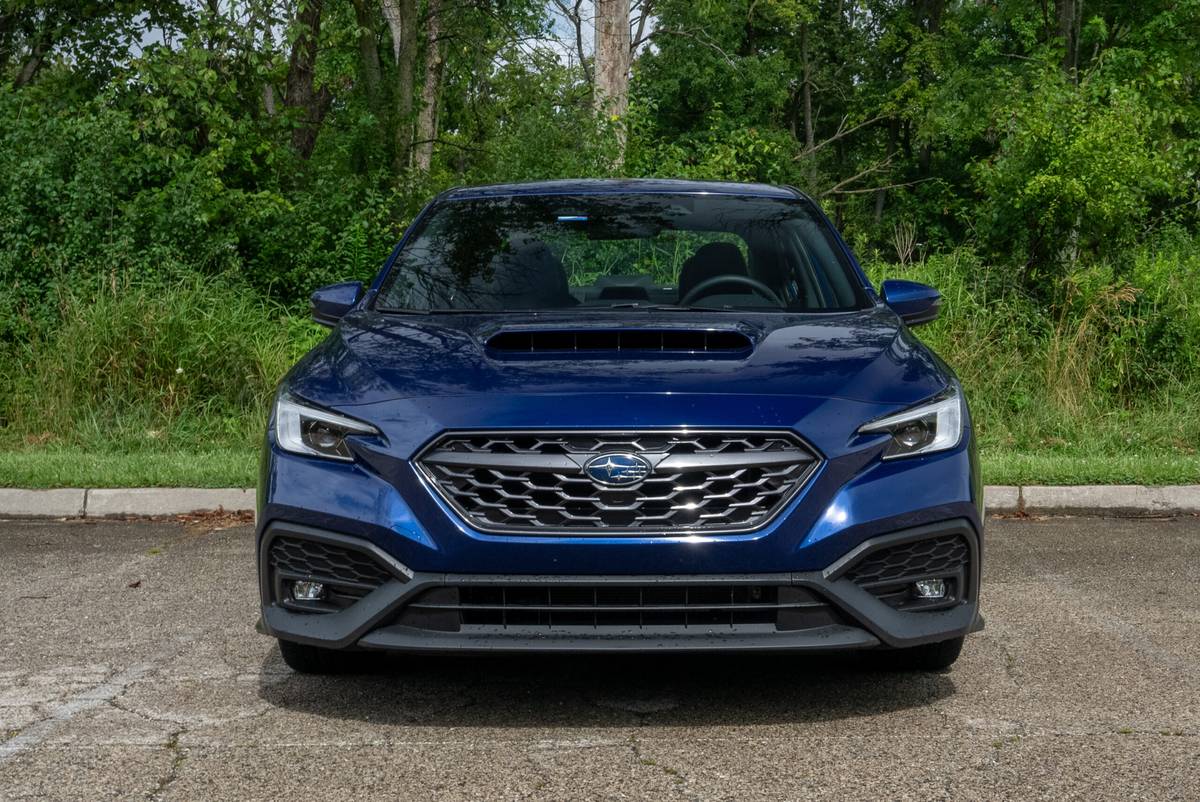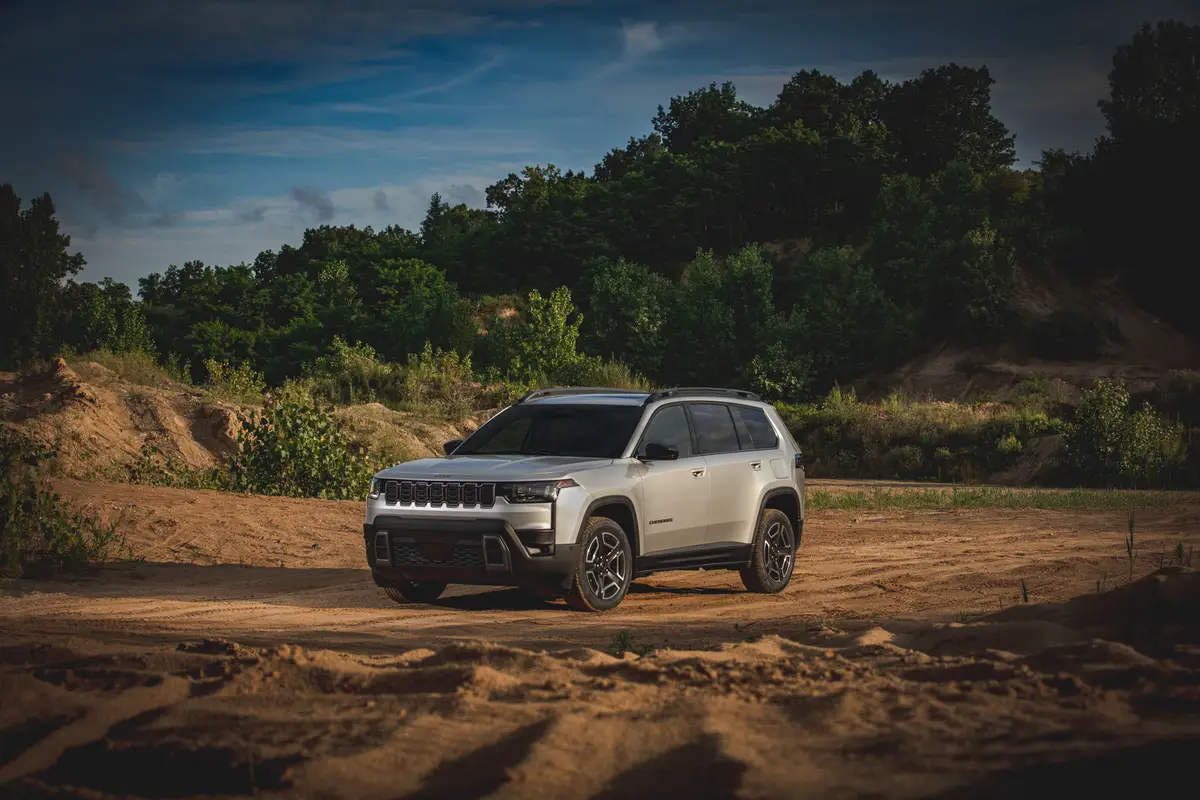PickupTrucks.com's view
If you’re the last one to the party, you better be dressed to kill, or at least tow.
The Nissan Frontier is the fifth completely redesigned compact pickup truck to hit the market within the last year. It follows some heavy hitters, including the big Dodge Dakota and hot-selling Toyota Tacoma, both of which were introduced in the fall of 2004 as 2005 models. The GM siblings, Chevy Colorado and GMC Canyon, came out as 2004 models a year earlier. The only other compact trucks on the market are the sales-leading Ford Ranger and its Mazda clone, the B-Series pickup. Both ride on an old platform that by all accounts won’t be redesigned until at least 2009. The Ranger used to outsell the nearest competitor by almost 2-to-1, but the Toyota Tacoma could overtake the Ford this year as the best-selling compact truck. Although Colorado sales this year are off about 20 percent compared to the S-10 last year, the Colorado is the still the third best-selling compact followed by Dakota, Frontier, Canyon and B-Series.
In other words, after a few years of neglect, the compact market is buzzing with new activity and everyone is looking to see what Nissan brought to the show. All other manufacturers upgraded their packages significantly as the entire market faces an unexpected competitor: full-size trucks. Generous financial incentives have put full-size trucks nearly in the same price category as compacts. In the past, the compact buyer would cross-shop against similar-priced small cars. Now they’re lured to full-size trucks when window-sized advertisements shout 0-percent financing or thousands of dollars in cash-back rebates.
To compete with full-size trucks, the compact trucks had to get bigger and stronger. Previously only the Dakota was considered to be a midsized pickup but was still categorized with the compact trucks. Now GM, Toyota and Nissan have elevated their new pickups to the midsize class with spacious interiors, more horsepower and an emphasis on the larger crew cab models that carry 5 occupants. The manufacturers are also offering more luxury amenities and technology that improves safety and ride dynamics. It’s certainly a different market from just a decade ago when compact trucks were meant to be small, lightweight, nimble, fuel-efficient and inexpensive. Now they have GVWR and horsepower numbers that surpass ½-ton trucks of the ’80s.
So how does Nissan grab the spotlight in a highly competitive environment that suddenly has changed stages? Offer bigger numbers and look like a full-size truck.
It’s safe to say the new Frontier is a ¾-scale version of company’s full-size Titan. The two trucks share styling cues, especially in the front end with their angled-strut grilles. The Titan’s V8 is an extension of a car-based family of engines found in the Infiniti , and the Frontier’s new V6 is a stroked version (92mm vs. 81.4mm) of the engine found in the 350Z and other cars. The Frontier’s frame is scaled-down version of the Titan’s F-Alpha fully boxed structure that uses plenty of High Tensile and Super High Tensile steel in critical areas. Frame weight is reduced by 22 percent using this upgraded steel. The Frontier also carries over the Titan’s suspension design and bed-utility features.
“(We’re) essentially giving buyers the same tough truck in large and extra large,” says Mark McNabb, vice president and general manager at Nissan.
This will be the third generation of the Frontier line, which superceded the venerable Nissan Hardbody pickup in 1996. There are two body styles: King Cab with a 76-inch-long bed and Crew Cab with a 62-inch bed. Nissan will not offer a regular cab model or return with a Crew Cab long-bed model. Yet the 2005 Frontier still distinguishes itself from any previous Nissan pickup with its size. Wheelbase is almost 10 inches longer at 125.9 inches while front/rear track is almost 2 inches wider. Interior dimensions, especially shoulder room and rear leg room, increased all around.
Just as important as size, the power numbers also increased dramatically. In comparing a new Crew Cab LE 4×4 with last year’s supercharged S/C model, the gross vehicle weight rating (GVWR) went from 5421 pounds up to 5816 pounds. Tow capacity jumped from 5000 to 6100 (max towing on the King Cab is 6500 pounds). Payload shot up from 915 pounds to 1365 pounds.
The most dramatic improvement came under the hood. Last year’s 3.3-liter V6 was rated at a struggling 180 horsepower at 4800 rpm with peak torque of 202 ft-lb at 2800 rpm. Even when supercharged, the 3.3L engine could muster only 210 horsepower but the torque jumped up considerably to 246 lb-ft. The new 4.0-liter V6 pumps out 265 horsepower at 5600 rpm with peak torque of 284 lb-ft at 4000 rpm. Those ratings give Frontier bragging rights in the power department, even over the standard V8 in the Dakota, although Dodge has promised a High Output version later in 2005. In fact, the Nissan VQ40 is the most powerful V6 in any pickup, midsize or full-size.
The V6 engine is backed by a new electronically controlled 5-speed automatic or 6-speed manual. A base 2.5-liter, 154-horsepower I4 engine comes only in the King Cab XE 4×2 model with the 5-speed manual or optional automatic. On 4×4 models, the 2-speed, part-time transfer case is controlled electronically.
Nissan officials acknowledge the diminishing sales in the compact truck field but also say they’ve identified trends that they feel the company can capitalize upon with a new Frontier. First, there’s a big shift to crew cab models-and Nissan boasts it was the first to offer a crew cab in the United States with the last Frontier. More 4×4 models are being sold, a reflection of active buyers who need recreation vehicles. Nissan projects 40 percent of Frontier buyers will opt for 4×4 models and 55 percent will purchase a Crew Cab. Only 15% will go the baseline SE model while the remaining customers will choose the V6 offered in three different trim levels: SE (31 percent), LE (23 percent) and NISMO (31 percent).
As with most trucks, the features and options list is long and confusing as you switch between trim levels and cab configurations. SE is a basic but comfortable package while the LE offers power accessories, available leather seating and upgraded audio options. The NISMO trim appeals to more active off-roaders. You can get the power windows and the audio package on the NISMO but not leather seating. And the 6-CD Rockford Fosgate audio system is available only on all Crew Cab trims, not on any King Cab model. Nissan has a unique Utili-Track tie-down system (same as the Titan) for the bed to help with large, unstable loads, but it’s not available on the lower-priced, longer-bed King Cab SE models that would appeal to landscapers and other hard-working types. So as more features are discussed throughout this story, be aware that not all will be available on every trim.
The NISMO package may be particularly appealing to active types. It comes from the minds of Nissan Motorsports, a division that has worked only with cars in the past. Now it’s joining the off-road package movement to compete with Z71, TRD and other such models. NISMO-which is available on 2- and 4-wheel-drive models as well as King Cab and Crew Cab-gives you BFG Rugged Trail tires, skid plates and Bilstein shocks. Our only disappointment was the fun-to-drive 6-speed manual will be available only on the King Cab 4×4 and none of the Crew Cab models or the 2WD King Cab. But the NISMO does get an electric-locking rear differential and 4-wheel limited slip (ABLS) as standard equipment.
Nissan will bring more high-tech features to the Frontier that will assist off-roaders in extreme conditions. Hill Descent Control (HDC) allows for travel downhill without constantly hitting the brake pedal. This feature is engaged by the driver and is available only in 4WD mode. Hill Start Assist (HAS) allows the driver to stop on an up-slope, release the brake pedal and not roll back for up to two seconds as the driver shifts his foot to the gas pedal. This action provides for smoother, controlled acceleration up a steep hill and is always active in any 4×4 model.
Some other noteworthy off-road features are not very noticeable, and that’s the way Nissan want it. The frame is designed so that key underbody hardware and components are up into the frame for maximum ground clearance all around. The move also gives the truck a very clean appearance from the side.
I had a limited opportunity to drive the new Frontier during its press introduction in Texas. Unfortunately, the area was hit with tremendous rain storms most of the day, so travel was slow and deliberate just to see past the wipers. I did manage to form a few initial impressions, however.
The interior is roomy and versatile. The front passenger seat folds flat to double as a work area and there is rear underseat storage. The highway ride was quiet with little or no interference to occupant conversation. Interior materials on my LE model were upscale quality but not out of character with a rugged vehicle. Overall design was structured but still had a relaxing quality. In other words, it wasn’t so industrial that you had to play Devo CDs all day. The gauge layout on the instrument panel is easy to read, and the audio/climate controls are accessed hanidly. This is a truck interior that is functional yet warm enough to be inviting.
Having driven all the new compact/midsize trucks within three months of the Frontier introduction, I can honestly say I didn’t find a major difference in the highway ride quality. All the trucks are getting stiffer frames, beefier body structures and well-placed insulation. It would take a careful side-by-side study to determine if there were significant differences in ride quality. All have improved dramatically to challenge full-size trucks for roominess and comfort. With the exception of some feature availability concerns, the new Frontier has not yet disappointed. Otherwise I really didn’t make further judgments on the Frontier as navigating through flooded roads and trying to find the right turnoff kept my attention during the morning drive. We will be getting additional models for full tests in the near future and will have more in-depth reports. Also, the new Honda and Mitsubishi trucks will be introduced soon, giving the segment even more new blood and heating the up the competition. So how long will the spotlight stay focused on Nissan? Stay tuned.
Latest news



